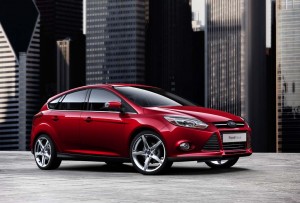Hoping to make up for lost time in some of the world’s fastest-growing automotive markets, Ford Motor Co. will be making investments that could total near $1 billion in Asia and Africa.
The investments, which include $450 million for a new plant in Thailand, as well as a yet-to-be-detailed expansion in South Africa, will help Ford not only serve those strong national markets, but expand exports to surrounding markets.
“Frankly, we’re maxed out,” said Joe Hinrichs, Ford’s president for Asia-Pacific and African operations. “We have more potential than we can build,” he said during an announcement in Bangkok.
Thailand has been a key base of operations for Ford for nearly two decades, largely in partnership with its long-time Japanese affiliate Mazda Motor Co. Their relationship will continue, but to a lesser degree following the U.S. maker’s decision to sell off much of its once-controlling stake in Hiroshima-based Mazda.
Early on, Thailand itself was seen as the great Asian growth opportunity, but it has since been surpassed by China, now the world’s largest national automotive market. But Thailand provides a more politically neutral export base for products like the compact Ford Ranger pickup. The new plant will permit it to produce more copies of the successor Ranger.
Thailand will ship the next Ranger to markets as far away as Europe, though there are currently no plans to import the pickup into the U.S., despite Ford’s plans to abandon production of the current American Ranger – which will lead to the closure of its Twin Cities assembly plants, in Minneapolis.
Ford also plans to produce the next-generation Ranger in South Africa, Hinrichs confirmed, giving it even more options for exports around the world, as the two production bases can be intermixed depending upon issues like exchange rates, distribution costs – and politics.
The new Thai plant will build the Focus, one of several critical “world cars” Ford is rolling out in markets that include the U.S. A centerpiece of the company’s so-called One Ford strategy, it marks a distinct shift in product development strategy, with a single model developed for worldwide applications. According to Derek Kuzak, Ford’s product development czar, there will be tweaks to the Focus to reflect local regulations, as well as consumer needs, but the American version, for example, will share 80% of the components of the European Focus.
Ford is also building the next-gen Focus in China, which is a critical market for the maker, but one where it got off to a late start, placing its bets in a three-way partnership with Mazda and China’s Changan Automotive Group. Increasingly, Ford will work with Changan directly, though Mazda is also expected to continue partnering with the Chinese group on its own.
Ford’s move into China was late compared to General Motors, which formed its first partnership just before the turn of the millennium. It has become one of the most important ventures in the GM empire, a major source of sales and revenues while the troubled maker is struggling to reverse the setbacks that sent it plunging into bankruptcy last year.
Add GM ventures in Europe, Latin America and other parts of the world and they collectively account for roughly two-thirds of the company’s sales today, with the likelihood of still more growth ahead.
Though Ford is stronger in some foreign markets, it is playing catch-up in others, and the new South African and Thai investments will be critical – all the more so considering the continued weakness in Europe and North America, still the heart of Ford’s sales.
The U.S. maker has scored some impressive victories lately, including the posting of a $2 billion first-quarter profit and the news that it was recently ranked as the best mainstream brand, and fifth brand overall, in the closely-watched J.D. Power and Associates Initial Quality Survey.
But growing foreign demand will be a critical step in generating the cash Ford needs to pay back $31.3 billion in debt. Unlike its bankrupt, cross-town rivals, it didn’t wipe out its hefty debt last year.

